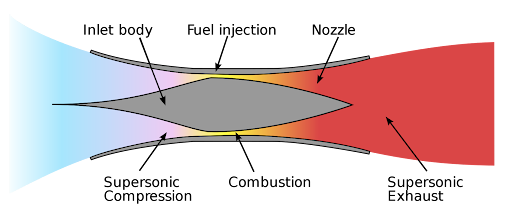Colloid thrusters as plasma-stealth and electromagnetic compressor systems. For next-generation aviation.
The "electrospray" can work also as a stealth system.
The ion engines can give poor thrust. But those kinds of systems can used to make the ion layer between radar and aircraft or ships. The ion engine can also used to create an ion trail behind the drones. That is flying between the aircraft and the ground.
The "electrospray" can be a useful tool in combination with technology where thin ionization is used to create an ion layer over aircraft and ship hulls. That kind of system can make the next-generation plasma-stealth systems possible.
In those plasma-stealth systems, the ion layer pulls radar impulses in ions or anions. And that thing denies the radar echo. In some other models, the ion system makes the plasma cloud that acts like a "chaff dispenser" and makes the false targets for radar-homing missiles. In some other versions, the system loads opposite polar electricity to the target. When the target is loaded with minus electric load, and ions are delivered to the air, that negative electricity pulls those ions like protons or nitrogen ions to that target.
There are two ways to make the electrospray that denies radar see targets. The first one is that. The aircraft or ship covers its shell with an ion layer. The other system bases that fast-flying drones or manned aircraft will pull ionic trails behind them. That ion or anion trail will deny the radar impulses travel through it.
 |
| SR-72 |
From Above: Lockheed SR-27 hypersonic testbed concept. And Boeing MQ-28 Ghost Bat. This type of drone can pull ion trail between the aircraft and radars.
Colloid thrusters as plasma-stealth and electromagnetic compressor systems. For next-generation aviation.
"Simple ramjet operation, with Mach numbers of flow shown" (Wikipedia/Ramjet)
"Diagram of principle of operation of a scramjet engine" (Wikipedia/scramjet)
The problem with those systems is the lack of compressors. It's hard to make a mechanical compressor that accelerates the airflow to Mach 7. If the compressor rotates too fast it makes a vacuum around it. And that makes it impossible to put that compressor at the front of the ramjet or scramjet engine. That vacuum pulls exhaust gas forward and that engine stops to give thrust. And the centripetal force can also break a fast-rotating turbine.
In some visions, the compressor is behind the Ramjet. And that vacuum that forms around the fast-rotating turbine wheel behind the exhaust tube pulls airflow through the engine. Another thing is to use an electromagnetic compressor that pulls ion flow through the ramjet or scramjet engine.
That means the aircraft must reach Mach 1 so that the ramjet engine can start to operate. The scramjet requires about speed of Mach 7. That it can ignite fuel that is hydrogen. If the system uses magnetic accelerators and ions it could accelerate airflow to the needed speed while the aircraft is in a stable position.
The colloid thruster could be a suitable tool for hypersonic aircraft. The system can ionize gas for magnetic compressors.
The problem with the ramjet and scramjet engines is that they have no compressors. The mechanical compressor that can push air to the super-, and hypersonic engine with speeds of Mach 5+ is hard to make. One solution that can respond to that problem is the electromagnetic compressor. The electrospray system or colloid thruster can used as an auxiliary ionizers for ion compressors. The ion compressor system pulls ions like oxygen ions into the jet engines.
That kind of system is suitable for ramjet and scramjet engines. The ionization makes it possible for engineers to create a system that can drive gas flow in supersonic or hypersonic engines. The system pulls ionized gas through the engine. And that gas flow travels with speed. That is high enough that the engine can ignite the hydrogen. That is suitable fuel for super- and hypersonic systems. The magnetic compressor uses magnetic fields to create the gas flow that allows it to ignite the fuel.
The electrospray system also can make the ions for the electric jet engines. In electric jet engines, the combustion is replaced by using an electric arc. The system can use the magnetic compressor to collect ionized gas for the electric jet engine. Then the system makes an expansion for that gas by using an electric arc. That kind of engine system are very powerful tool for the next generation of very fast aircraft.
https://www.boeing.com/defense/MQ-28/index.page
https://forcaaerea.com.br/raaf-nomeia-como-mq-28a-ghost-bat-o-loyal-wingman/
https://interestingengineering.com/innovation/new-electric-jet-engine-actually-works-inside-the-atmosphere
https://militaryarmamentshub.com/admin/inside-the-top-secret-race-for-americas-first-hypersonic-aircraft/
https://scitechdaily.com/electrospray-technology-palm-sized-propulsion-for-future-space-missions/
https://en.wikipedia.org/wiki/Boeing_MQ-28_Ghost_Bat
https://en.wikipedia.org/wiki/Colloid_thruster
https://en.wikipedia.org/wiki/Lockheed_Martin_SR-72
https://en.wikipedia.org/wiki/Ramjet
https://en.wikipedia.org/wiki/Scramjet







No comments:
Post a Comment
Note: Only a member of this blog may post a comment.